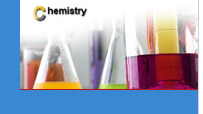火碳是蜡产品目前的一个较大的、稳定增长的终端应用领域,包括石油蜡及一些植物蜡。是板施胶之后的第二大非包装终端应用领域,估计消费了15.89—17.025万吨的石油蜡;消费了6810--11350吨的植物蜡,例如氢化大豆蜡、棕榈蜡等。而石油蜡主要是粗蜡,粗蜡占石油蜡总消耗的绝大多数。粗蜡的含油量为5-30%,熔点为1200F-1600F。消耗的其它石油蜡为矿脂和一些原油中提炼的蜡类产品。
火碳是用锯屑和蜡产品制造而成的,先把混合物压进原木形状的模具中,模具的直径为3.5英寸(约8.89厘米),然后把混合物从模具中挤出,并切成长度为13-14英寸(33.02—35.56厘米)小段。一般来说,蜡占火碳总重量的一半,而火碳的规格为3.2磅(约1.4528公斤)、5磅(约2.27公斤)和6磅(约2.274公斤)。火碳是用纸包装的,单个出售或整箱出口(6-9根/纸箱)。
火碳是靠纸来点燃的,先点燃包装纸,然后包装纸能点燃蜡,蜡又能依次燃烧木质材料和锯屑。火碳能很快点燃,然后慢慢燃烧,并且能完全燃烧。整个燃烧过为3-4小时。另外,很多先进的技术能降低然后燃烧废气和二氧化碳。平均来看,使用火碳产品能降低70-90%的主要燃烧污染物质和残渣。
有两家公司在主导火碳的生产,分别是加州的久焰公司(Duraflame, INC,原名为加州雪松公司)和嘉顿公司(Jarden Corp.)。嘉顿公司(Jarden Corp.)在2006年收购了康罗斯公司(Conros Corp.),康罗斯公司主要(Conros Corp.)生产雪松牌(Pine Mountain)北地牌(Northland)火碳产品。康罗斯公司(Conros Corp.)以前收购了俄州色宾市(Sebring,OH)的色宾木业公司(Sebring Forest Ind.)。加州雪松公司在加州的士德顿(Stockton,CA)、皮克林(Pickering,ON)和萨默塞特县(Somerset,KY)都有自己的工厂。雪松牌(Pine Mountain)北地牌(Northland)火碳产品的工厂在加州的沙加缅度(Sacramento, CA)、得州的格林维尔(Greensville, TX)、伯明翰(Birmingham)、基臣纳尔(Kitchener,ON)和春望(Spring Hope,NC)。两家公司的火碳产品都有自己的私有品牌,估计占市场份额的20-25%。其它辅助产品,例如打火器和点火碳也消耗蜡产品。
鉴于产品环保化的趋势,以及西方国家日益重视的大气环境(Air Quality Districts),生产商已经改良了废天然产品制作的火碳,即那些成分混合了大豆和棕榈油等植物蜡的火碳。加州雪松公司生产一种“全天然火碳(All Natural Firelog)”,该公司宣称采用蔬菜和植物蜡比用石油蜡好。这些蜡是利用回收生物和油制作的,比木/蜡火碳燃烧起来的有害物质要少至少四分之三。康罗斯公司(Conros Corp.)也改良了一种天然火碳,为咖啡打底的植物蜡,其品牌名为“嘉瓦碳(Java Log)”。
Firelogs-A Major End Use For Waxes
Firelogs are now a major, and modestly growing end use for waxes including petroleum and some naturally derived waxes. They are the second largest non packaging end use after boarding size, according for an estimated 350-375 million pounds of petroleum waxes and another 15-25 million pounds of waxes derived from natural products such as hydrogenated soy oil and some palm oil. The principal petroleum waxes are slack waxes, which account for a dominant share of consumption. The oil content of the slack waxes range from 5-30 percent with melting points ranging from 1200F—1600F. The balance of petroleum waxes consumed are petrolatums and some waxy reduced crudes.
Firelogs are made by combining sawdust and waxes, pressing the mixture into the shape of a log usually with a diameter of 3.5 inches, extruding the log, and cutting into 13-14 inch lengths. Wax generally represents one-half of the weight of logs which are made in 3.2, 5 and 6 pound sizes. The logs are wrapped in paper and sold singly or by carton containing 6-9 logs.
Logs are ignited by lighting the paper which ignites the paper wrapper which ignites the wax which in turn ignites the wood products and saw dust. The log ignite quickly, are slow burning, burn completely, providing 3-4 hours of fire. In addition, a number of studies have demonstrated that synthetic firelogs reduce emissions of particulate matter and carbon monoxide. On average, emissions of key pollutants associated with residential wood combustion are reduced by 70-90 percent through the use of manufactured firelogs.
The two companies that dominate firelog manufacturing are Duraflame, Inc. of Stockton, CA (originally known as California Cedar Co.) and the Jarden Corp., which in 2006 acquired the Conros Corp. Which produced firelogs under the PineMountain and Northland brand names. Conros had earlier acquired Sebring Forest Industries of Sebring, OH. Duraflame has plants in Stockton, CA, Pickering, ON and Somerset, KY.PineMountain and Northland firelog are made in Sacramento, CA, Greensville, TX, Birmingham, AL, Kitchener, ON and Spring Hope, NC. Both companies also produce private label firelogs which are estimated to account for 20-25 percent of the market. Auxilary products such as starter matches and starter logs also consume wax.
With the trend toward more environmentally friendly products, and faced with increasing restrictions by Air Quality Districts in the West, producers have developed firelogs made from waste natural products that are mixed with vegetable waxes such as those made by the hydrogenation of soy and palm oil. Duraflame markets a product called the “All Natural Firelog” which the company indicates utilizes vegetable and plant waxes rather than petroleum wax as a combustible binder. These firelogs are made of recycled biomass and oils and produce more than 3/4 less particulate emissions than a comparable wood/wax firelog. Conros has developed a natural firelog that utilizes used coffee grounds bound with a vegetable wax which it sells under the “Java Log” brand name.
|
